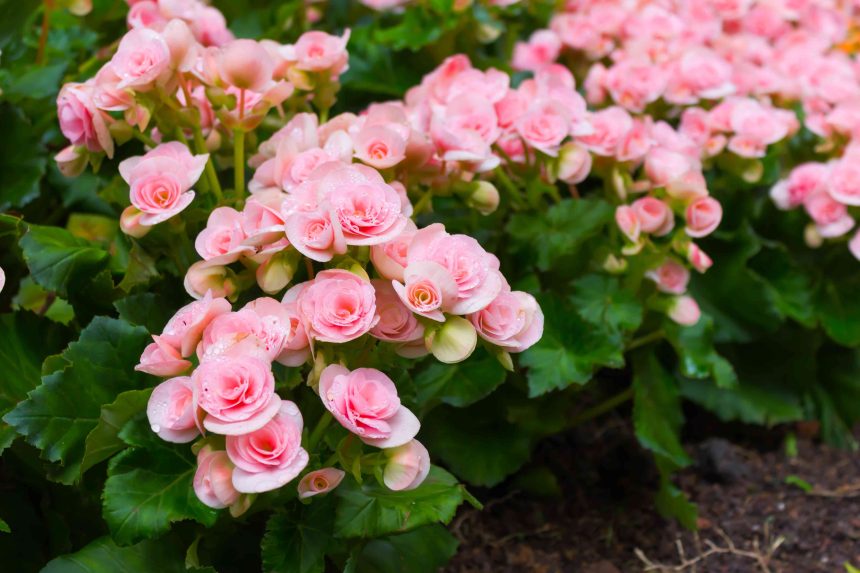An annual is a plant that can be sowed, achieve germination, blossom, and wither over the course of a year. Offering almost endless variety and near-instant gratification, annuals are the heroes of the flower garden. Most are easy to grow from seed or seedlings, making them perfect for beginners.
Annuals offer flexibility for the gardener and can add color in a flash. They are also well-suited for cutting, so you can create arrangements all season, says Adam Dooling, the curator of Outdoor Garden and Herbaceous Collections at the New York Botanical Garden in the Bronx, N.Y. “To grow healthy cut flowers, any sunny, well-draining site will do,” he says. Because most annuals require regular deadheading to promote flowering, cutting flowers for arrangements also clears the way for the next set of blooms.
Ahead, we spoke to plant experts about the best annuals for gardeners who are just starting out—but any of these are also great for seasoned gardeners who are looking for a lighter lift.
Celosia
Known for their statement shapes (wheat, plumed or crested) and vibrant hues, celosia grows well in all zones but primarily in ones with mostly warm, full sun, and dry conditions, say Jennifer and Adam O’Neal, the owners of PepperHarrow Farm and co-authors of Small Farm, Big Dreams: Turning A Flower-Growing Passion into a Successful Floral Business. “These flowers are annuals, so they don’t come back each year, but we’ve found that they readily self-seed and will continue to proliferate in the garden year after year, which makes them a great option for beginner gardeners,” they say.
Salvia
Our experts recommend salvia, which grows best in zones 8 to 10 with full sun to partial shade and drier conditions. These are known for their bright hue that stays vibrant through summer heat—so long as they get a weekly, deep watering. “We love to grow salvia blue bedder at the flower farm because of its ‘true’ blue color,” say the O’Neals. “It’s great for drying, and it’s also a positive plant to have in the garden to attract birds, bees, and butterflies.”
Strawflower
For the O’Neals, the strawflower is a must for a beginner garden because of their bright hues (like peach and hot pink), durability to varying conditions, and pollinator-attracting qualities. “Strawflower also likes warm, sunny, and drier growing conditions, but it can tolerate some partial shade,” they say. “Although it is an annual, it can act as a tender perennial in zones 9 to 11, but it can be grown in any zone as long as it receives the requirements stated.” For colder, wetter climates, they advise growing strawflowers in a covered area.
Poppy
The classic poppy has bright orange or red flowers; most will self-sow regardless of the environment. However, poppies perform best in sunlit plots with hydrated but well-drained soil in zone 7b.
Nasturtium
An edible flower with bold blooms, the nasturtium plant is simple to grow and maintain. This annual thrives in well-drained soil and full sunlight in zones 10 and 11. Martha likes to plant hers along the stone walls of her property for a brilliant pop of color, and she loves it for the spicy flavor it lends to recipes.
Zinnia
Zinnias have bright, cheerful flowers and are the perfect annual for novice gardeners. The deer-resistant plant thrives in elevated temperatures and full sunlight with minimal care in zones 3 to 10. Zinnias must not be overwatered, or they’ll develop a powdery mildew.
Begonia
oopoontongoo / Getty Images
Annual begonias are an excellent choice for beginner gardens. Plant in partial shade to avoid leaf burn, and be careful not to overwater. These should grow well in zones 9 and 10; check your soil for proper drainage.
Marigold
Marigolds are yet another edible annual with vivid petals ranging in color from red and orange to flaxen and cream. The plant’s sun-loving blooms are long-lasting and deer resistant. They will add a burst of color to any yard in zones 2 to 11.
Cosmos
A cost-conscious and lovely annual, cosmos are easy to care for. The seeds can be sown directly into outdoor soil and require little water in order to multiply. Balmy temperatures and full sunlight encourage cosmos to thrive in zone 9.
Sunflowers
When planted directly in fresh soil outdoors, sunflower annuals can be expected to flourish in a myriad of conditions, mainly in zones 4 through 9. The tall plants yield a significant number of seeds per bloom, remain fresh for over a week when cut for an arrangement, and provide food for birds.
Calendula
A half-hardy annual with striking orange-yellow petals, calendula can be sown in very early spring to produce multi-purpose blooms. The plant offers many medicinal uses and grows best in zones 9 through 11.







